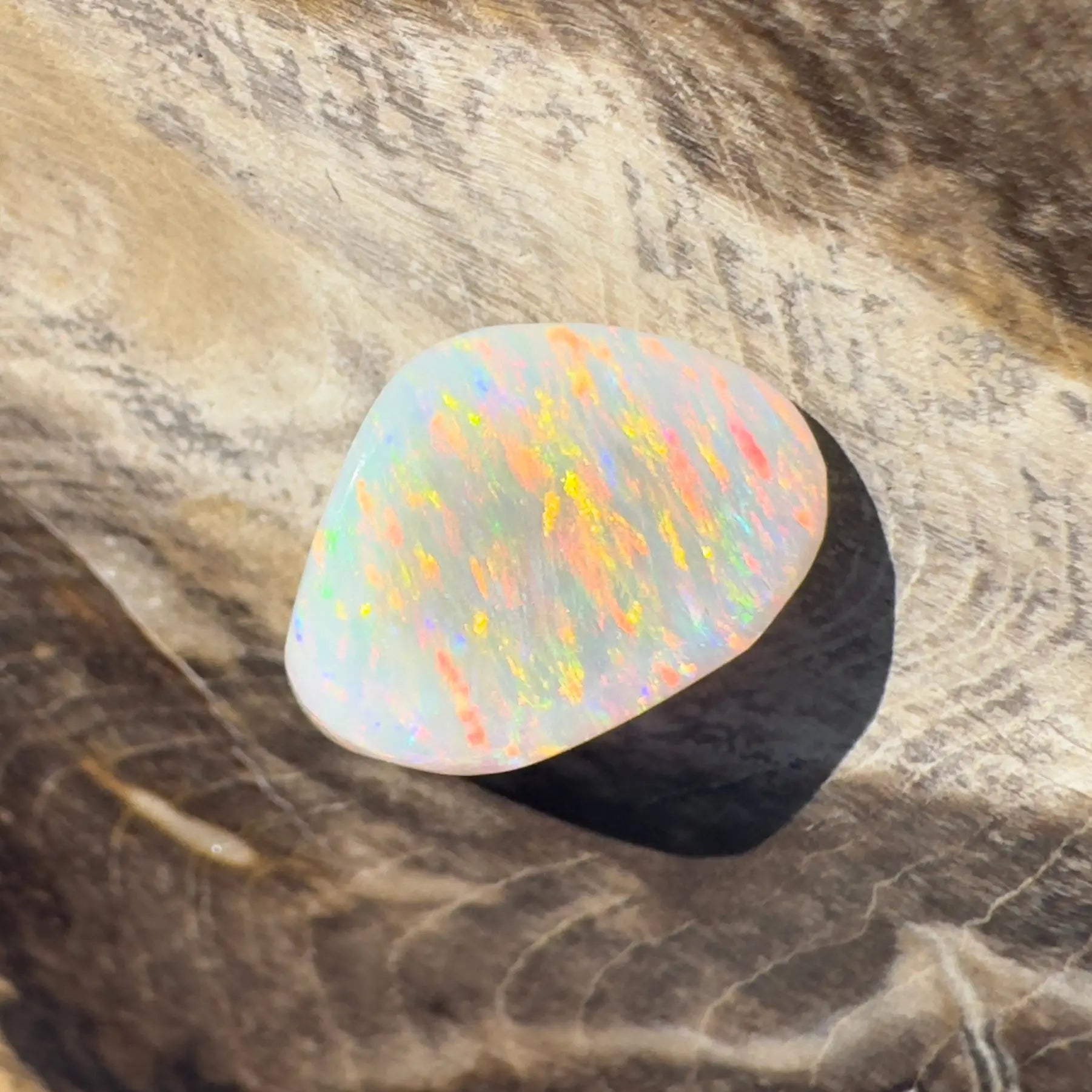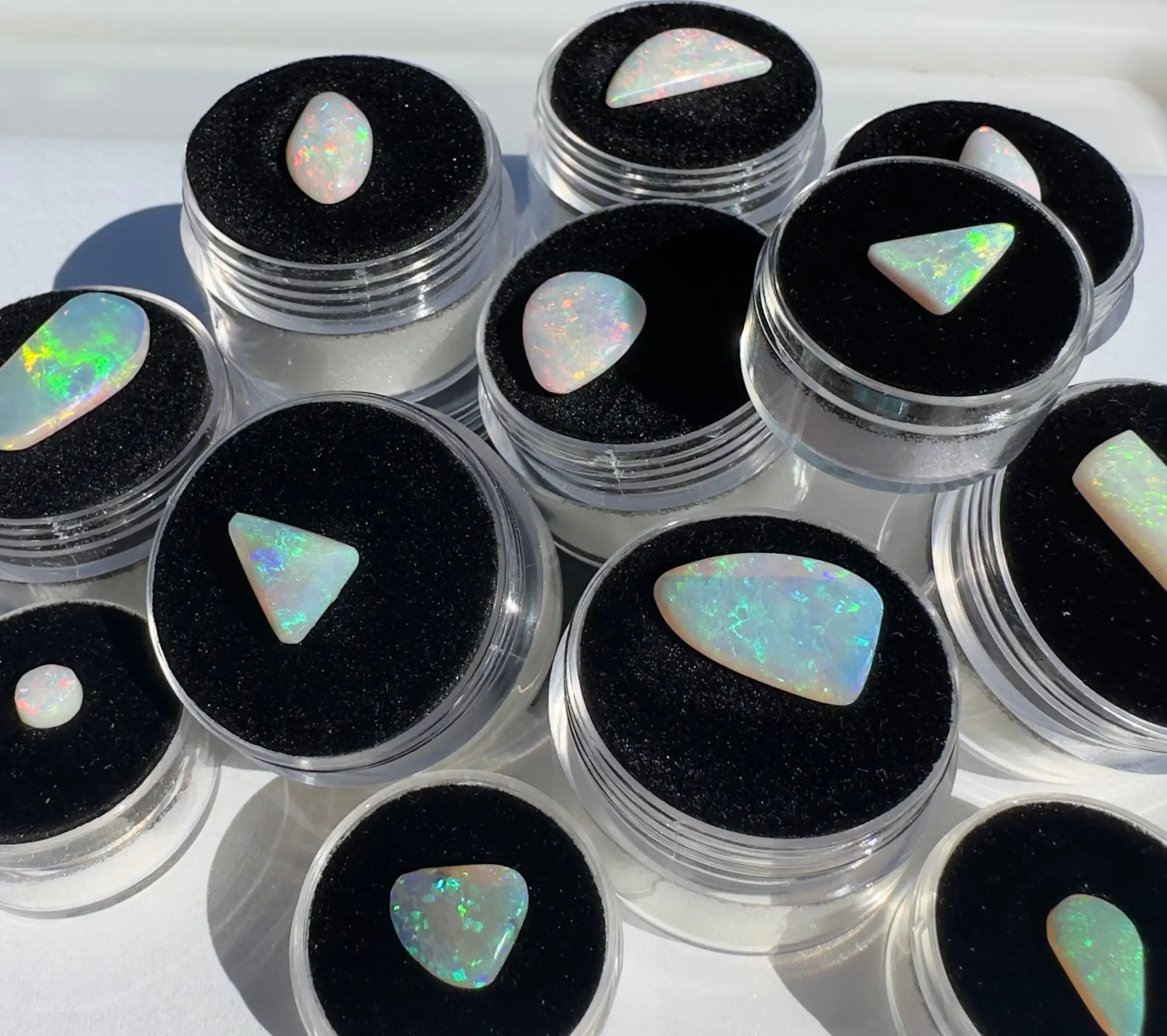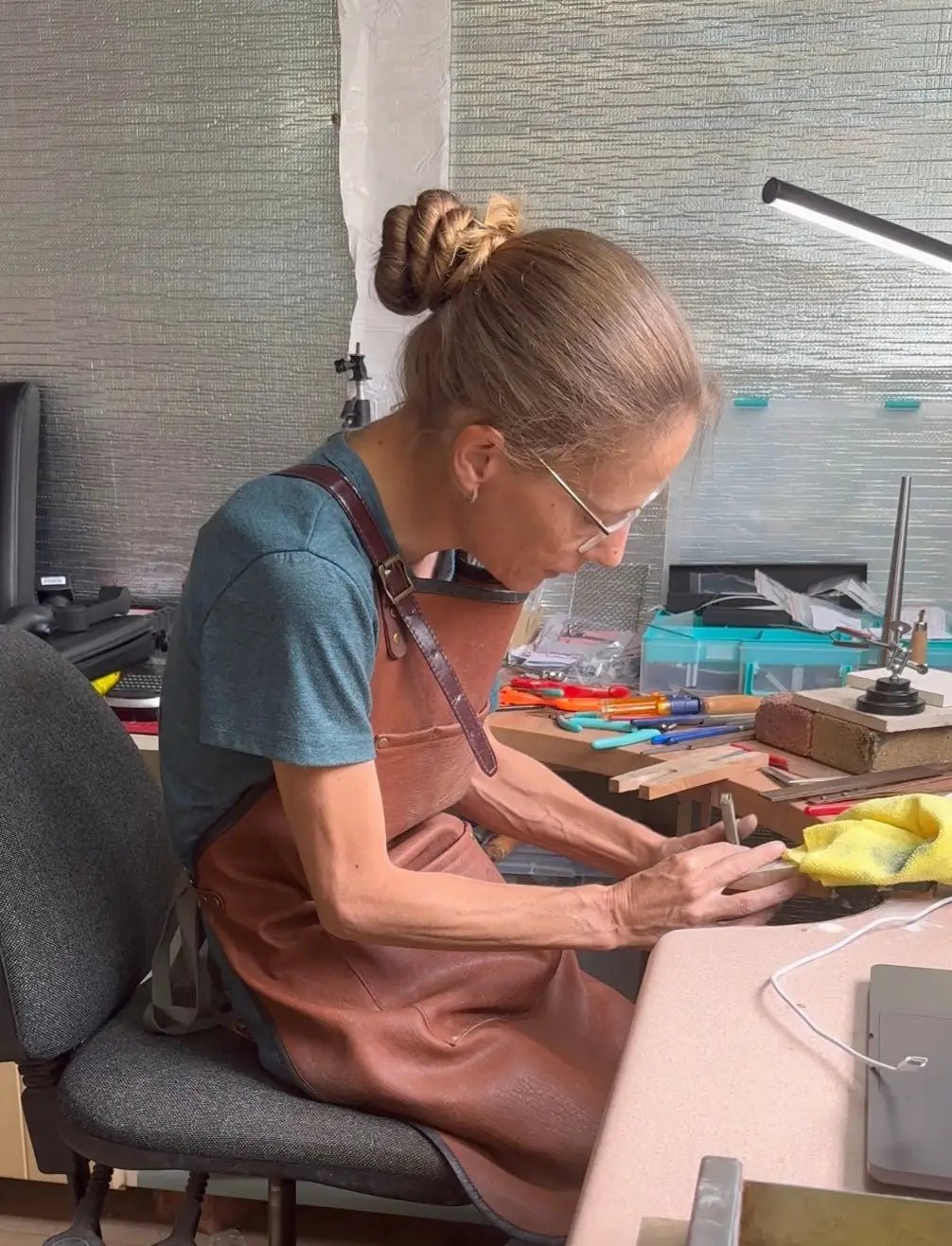
Opal Facts or maybe Fiction?
At Iona Opal Australia, we’ve spent some time researching and debunking common myths about opals to help our customers gain a better understanding of this incredible gemstone!
Discover the Truth About Opals...
Fiction: Opals need to be soaked in water to prevent cracking.
Fact: Australian opals are non-porous, meaning water, oil, or other substances don’t affect them. While Ethiopian opals absorb moisture and oils, making them fragile, Australian opals’ water content was established over 100 million years ago during formation. Soaking won’t extend an opal’s life, though wetting can temporarily mask cracks, which makes cutting difficult.
Fiction: Opals are extremely fragile and break easily.
Fact: Opals are more delicate than some gemstones but are tougher than often assumed. They endure intense processes, such as spinning and grinding, before being used in jewellery. With a hardness similar to glass, opals can dull over time but are easily restored with re-polishing. Avoiding heavy manual tasks can help keep them pristine.
Fiction: Opal crazing and cracks can be fixed by soaking in glycerine.
Fact: Since opals are non-absorbent, soaking in glycerine only makes them oily. Opticon solution is the best protection for cracked opals to prevent further damage, though it won’t repair existing issues.
Fiction: Black opals are fully black.
Fact: A truly black opal would have no value. Black opals actually showcase a spectrum of colours, with a dark base that sets them apart from milky opals like crystal and white opals. Black Opal, the rarest gem, is found exclusively in Australia.
Fiction: Sunlight can dry out an opal.
Fact: Sunlight can actually enhance the brightness of Australian opals. However, high heat, like fire, can cause cracking or fading. Jewellers must remove opals before soldering to protect the stone.
Fiction: All types of opals—solid, doublet, and triplet—should be cared for the same way.
Fact: Solid opals are resilient and safe in water, while doublets and triplets, which have multiple layers, should be kept out of liquids to avoid separation.
Fiction: Glycerine, toothpaste, or water can revive a stone’s lustre when it needs polishing.
Fact: Although water can enhance a stone’s appearance temporarily, only professional polishing fully restores its shine. Solid opals may need this after years of wear.
Fiction: Opals are bad luck.
Fact: This superstition stems from old myths and diamond traders promoting diamonds over opals. Cultures worldwide have long prized opals as good luck symbols.
Fiction: Triplet opals have three colours.
Fact: Triplets have three layers: a thin slice of opal on a black backing and a protective cap, usually crystal or quartz. Doublets consist of an opal layer and black backing. Iona Opal Australia works exclusively with solid Australian Opal only.
Fiction: Opal’s colours come from within the stone.
Fact: Opal’s colours arise from light reflecting and diffracting off tiny silica spheres inside the stone.
Fiction: Opals are a poor investment.
Fact: Due to their rarity and limited supply, opals are increasingly valuable, especially as mines like Mintabie have all but closed. Black Opal, one of the rarest gems, offers a solid investment alternative to gold or silver.
Fiction: Lightning Ridge is Australia’s only opal mine.
Fact: Australia has opal mines in twelve towns across three states, including Lightning Ridge, Coober Pedy, Andamooka, and others.
Fiction: Opals can’t be worn in cold weather.
Fact: Australian opals withstand cold, even in a freezer for a week! However, extreme temperature changes should be avoided.
Fiction: Opals are formed like glass.
Fact: Opal forms from a silicon dioxide solution, filling cracks in the earth over millions of years. This process creates various opal types across Australia, including black opals, white opals, and Queensland boulder opals.
Fiction: Australia has ‘fire’ opal.
Fact: Fire opal is almost non-existent in Australia, with only rare discoveries like the Williams Opal Mine near Coolgardie.
Fiction: Opals are found in Victoria.
Fact: While some opal-like stones are discovered in Victoria, they lack the quality and quantity needed for commercial use.
By separating the fiction from the facts, we aim to deepen your knowledge and appreciation of opals. Iona is always happy to answer any questions you have about our amazing Australian Opal. Send us a message via our contact us page anytime!




Leave a comment
This site is protected by hCaptcha and the hCaptcha Privacy Policy and Terms of Service apply.